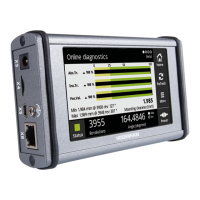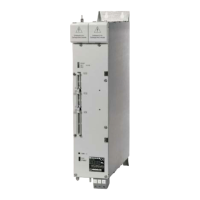8.3 Selection of machine axes
8.3.1 Assignment of transducer inputs to the control-internal axes
Four transducer inputs for sinusoidal signals are located on the rear of the TNC. There is also an input for
squarewave signals. Transducer connections can be assigned to the “internal axes” via machine parameters
253 to 257.
MP 253
Input X
MP 254
Input Y
MP 255
Input Z
MP 256
Input’lV
MP 257
Input V
Entry values: 1 c TNC-internal axis X
2 L TNC-internal axis Y
3 g TNC-internal axis Z
4 L TNC-internal axis IV
5 2 TNC-internal axis V
If, for example, the squarewave output X5 for the fifth transducer is to be used for an X-axis (exceeding
3040 mm), value 1 is to be programmed for machine parameter MP 257.
Stand assignment:
Entry value 0 in MP 253,-- 257
8.32 Axis switchover for axis IV
With the aid of the integral PLC it is possible to interpolate positioning moves e.g. in the control-internal
main axes (X, Y or Z) and traverse in machine axis IV (transducer input IV).
The combination possibility can be advantageous if axis IV is to be a main axis which can be
unconditionally interpolated.
If both markers are set to 1, the assignment of the internal axes and positioning loops is unchanged.
Axis IV as internal
MP 2590 MP 2591
X-axis
0 0
Y-axis
0 1
Z-axis
1
0
8.3.3 Designation of axis IV
Designation is via machine parameter MP 90
MP 90 axis designation for axis IV
Entry values:
OAA
3&u
l;B
4&v
2&c
5&w
Axis designation for axis IV is determined by parameter 90. Selection of axis designation A, B or C means
that the axis is for control or display of a rotary axis. In this case, the axis is relieved from mm/inch
conversion and can operate with one of the other linear axes in linear interpolation without tool compen-
sation. If U, V or W is selected, the axis is programmed as an additional linear axis. It is also subject to
mm/inch conversion and can work with one or two of the other axes in linear interpolation or with one of
the other axes in circular interpolation with tool radius compensation.
73 ’

